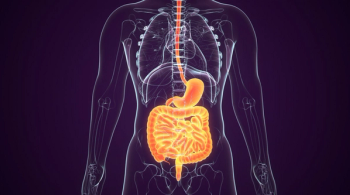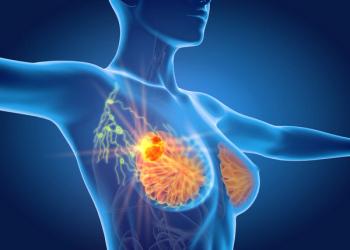
- ONCOLOGY Vol 14 No 7
- Volume 14
- Issue 7
Ambulatory Antimicrobial Therapy for Hematologic Malignancies
Risk prediction in patients with neutropenia and fever in a reliable and timely manner has only become possible in the last decade. Patients have been categorized as high risk or low risk based on certain presenting
ABSTRACT: Risk prediction in patients with neutropenia and fever in a reliable and timely manner has only become possible in the last decade. Patients have been categorized as high risk or low risk based on certain presenting characteristics. Low-risk patients may be defined as hemodynamically stable, with responsive or controlled malignancies, brief (≤ 7-day) periods of neutropenia, and no significant comorbidities or serious documented infections. Such patients may be suitable for alternative treatment strategies, such as outpatient parenteral, sequential, or oral therapy. These approaches still need to be definitively evaluated, with safety being the primary concern. Substantial advantages may be gained from such strategies, including reduced exposure to resistant nosocomial pathogens, greater cost effectiveness, and enhanced quality of life. [ONCOLOGY 14(Suppl 6):17-22, 2000]
Historically, fever in neutropenic patients has been considered a medical emergency that requires hospitalization and the parenteral administration of broad-spectrum antibiotics until resolution of symptoms.[1,2] Identification of patients who are at low risk for serious sequelae (eg, sepsis, death) allows caregivers to consider ambulatory treatment, including both outpatient oral antibiotic treatment and at-home administration of intravenous antibiotics. Consequently, even though definitive evidence supporting this approach is still lacking, increasing numbers of low-risk patients with fever and neutropenia are being placed in these settings.
Potential advantages of ambulatory treatment are self-evident: lower costs, less exposure to nosocomial pathogens, and improved quality of life. Such treatment, however, requires the accurate identification of low-risk patients, an appropriate infrastructure for implementing these options, and easy access to emergency treatment should the patients condition deteriorate.
The purpose of this article is to review the components of evaluation and treatment that make ambulatory antimicrobial therapy feasible and successful in patients with fever and neutropenia, to review the effective use of ambulatory care in such patients, and to compare the advantages of ambulatory antimicrobial therapy with its potential risks and drawbacks.
Over the last decade, research has made it possible to reliably identify a subset of patients in whom serious complications of infection are unlikely to occur. These low-risk patients might be appropriate for outpatient therapy. Features that delineate high-risk vs low-risk patients are not universally accepted, but several characteristics have been suggested as indicators of relative risk. These include status at the time of presentation (inpatient vs outpatient), acute medical comorbidity, control of cancer, type of underlying neoplasm, type of treatment, predicted duration of neutropenia, and presentation of infections (eg, pneumonia).
In 1988, a decision rule for stratifying patients was published, wherein the first substantial progress was made in clarifying which features were most likely to stratify for low-risk patients.[3] Relevant features for this stratification were derived from a retrospective analysis of 261 medical records obtained from 184 cancer patients with febrile neutropenia, among whom four risk groups were identified based on outcome (infection-related morbidity and mortality). Validity of this risk-assessment model was subsequently demonstrated in a prospective study of 444 patients.[4]
The first of the four defined risk groups included bone marrow transplant recipients with hematologic malignancies and other patients who developed fever and neutropenia during their hospitalization. Patients in this group had the highest risk for complications, including high morbidity and mortality. The second high-risk group included outpatients with comorbid conditions, such as hypotension, altered mental status, respiratory failure, bleeding, dehydration, abdominal pain, and spinal cord compression; morbidity and mortality were high in this group as well.
The third group included outpatients with uncontrolled cancer, but without comorbidity; as in the previous two groups, serious complications and mortality were seen. This group, as well, was associated with serious complications and mortality. The fourth group was composed of clinically stable outpatients without comorbidity, most of whom had solid tumors and were receiving conventional chemotherapy. These patientsapproximately 40% of those with fever and neutropenia and 60% to 70% of outpatientsreported a low rate of serious complications and no mortality.
Among the conclusions drawn from these studies were 1) a low-risk subpopulation indeed could be identified, and 2) patients in this study were at a low enough risk to study their management with a less intensive regimen than the standard inpatient, parenteral treatment. A pilot study by the same group tested this latter idea,[5] as have other investigators,[6-11] with the growing consensus that risk assessment is possible and that outpatient treatment, either completely or in the form of early discharge, is feasible.
Definition of Low-Risk Patients
Low-risk patients can be loosely defined as being clinically stable, having controlled malignancies, and presenting with no significant acute comorbidity. The term, significant, is, of course, a clinical judgment, but here indicates any condition suggesting clinical instability or requiring hospitalizationwith or without neutropenia.[1] Another significant predictor of risk in these patients is the degree and duration of neutropenia. For instance, a study from the National Cancer Institute (NCI) revealed that 95% of patients with neutropenia lasting seven days or less responded to the initial antibiotic therapy, whereas only 32% of patients with greater than 15 days of neutropenia responded to treatment.[12] Furthermore, the overall risk of medical complications was lower for patients whose neutropenia resolved in less than seven days.
Degree of neutropenia also contributes to risk, with increasing severity correlating with increased frequency of infectious complications.[13] Because patients with solid tumors are more likely to have short-duration neutropenia, these patients may, in general, have a lower risk of complications than patients with hematologic malignancies. Some patients with leukemia in remission who are intensively treated patients may also have low-risk presentations.[1,2,14] Although the duration and degree of neutropenia may be difficult to anticipate, both may be influenced by the intensity of the patients previous chemotherapy and the patients estimated bone marrow reserve.
Although this type of underlying neoplasm is associated with risk, in part because of the intensity of chemotherapy, not all patients with hematologic malignancies belong in this high-risk category. Talcotts original risk assessment scheme included patients with acute leukemia in remission among low-risk patients.[3] Several studies have upheld the validity of this assessment, such as those conducted by the Ambulatory and Supportive Care Oncology Research Program (ASCORP) at the M. D. Anderson Cancer Center in Houston, Texas, which included patients with controlled leukemia, as well as those with solid tumors.[4,5,14] One such study showed that while patients with solid tumors had a significantly better response rate (91%), patients with hematologic malignancies still responded well to therapy, at a rate of 60% (P = .002). Low-risk presentations, while occurring more frequently in patients with solid tumors, do occur among patients with aggressively treated hematologic malignancies.[2]
When fatal infections occur during episodes of fever and neutropenia, they usually occur in the terminal phase of disease and are due to untreatable cancer, not inadequate supportive care.[15] Therefore, many patients with controlled hematologic malignancies may qualify as low risk and may potentially become candidates for ambulatory therapy. Some experts consider such patients to be at intermediate or moderate risk.
The nature of the febrile episode (unexplained fever vs documented infection) or infecting pathogen (gram- positive vs gram-negative) may also influence the risk for the development of serious complications. Patients with fever and neutropenia, from whom pathogens have not been isolatedand in whom there are no identifiable clinical sites of infection, are considered to have unexplained fever. These patients have traditionally experienced better response to antimicrobial therapy than patients with documented infections. Patients with unexplained fever have also had fewer complications than patients with documented infections.
Increasing use of prophylactic antibiotics and hematopoietic growth factors for infection prevention has resulted in an increase in the proportion of patients with unexplained fever compared with those with documented infections. However, evidence purports that some patients who initially appear to have unexplained fever later develop documented infections in the course of the febrile episode and have a higher complication rate.[16] This underscores the need for frequent monitoring of neutropenic patients with fever.
In patients with fever and neutropenia, infections caused by gram-positive pathogens have been associated with substantially less morbidity and mortality than those caused by gram-negative pathogens. Until the mid 1980s, gram-negative bacilli were isolated from 65% to 80% of documented infections in such patients, with response rates ranging from 50% to 80%, depending on the organism and/or site of infection. Gram-positive organisms were isolated from 10% to 20% of such patients and were associated with response rates of greater than 95%.
Epidemiologic Changes Impact Risk
During the past 15 years, substantial, documented epidemiologic changes have shown a dramatic increase in gram-positive infections (40% to 60%) and a corresponding decline in gram-negative infections. This is largely due to the use of prophylactic antibiotics directed against enteric gram-negative bacteria, and to the use of vascular access devices that break the skin barrier. Both of these factorsincreases in the proportion of unexplained fever and gram-positive infectionsmightbe viewed as positive developments, since the morbidity and mortality in such patients have been reduced substantially.
Specific organisms might be associated with particularly aggressive or virulent infections. Examples among gram-positive bacteria include viridans streptococci, Listeria monocytogenes, or pneumococci, which can all cause overwhelming infections. Additionally, organisms, such as vancomycin-resistant enterococci (VRE) and staphylococci with reduced susceptibility to glycopeptides (glycopeptide intermediate Staphylococcus aureus [GISA]), limit therapeutic options. Similarly, among gram-negative pathogens, Pseudomonas aeruginosa, Acinetobacter species, and Stenotrophomonas maltophilia might be particularly problematic. Fortunately, these organisms are seldom isolated from low-risk patients, as previously defined.
It must be emphasized that risk assessment is a dynamic process that should be performed when the patient is initially evaluated and daily thereafter.[17] When performed with due diligence, such assessments result in reliable risk prediction and can direct treatment strategies.
Once low-risk patients have been identified, several approaches to ambulatory therapy are available. Antibiotics may begin in the hospital or in the clinic, with intravenous or oral antibiotics commencing as initial empiric therapy. In general, oral therapy should not be administered when nausea, vomiting, or mucositis are present. Discharge to home treatment may include the same regimens that were administered in the hospital, yet, on a more convenient regimen (once-daily intravenous infusion), or, as reported in pediatric patients, without any further antibiotic therapy.[2] The patients must be afebrile, stable, and show evidence of impending marrow recovery.
These therapies also can be greatly enhanced by the use of broad-spectrum, long half-life antibiotics (such as oral quinolones) and improvements in vascular-access devices. Advantages of ambulatory therapy include cost savings, higher quality of life, and less potential to acquire dangerous nosocomial pathogens.[2]
Early discharge is one possible alternative to inpatient treatment. Low-risk patients who begin therapy in the hospital can continue therapy on an outpatient basis, potentially reducing costs and improving quality of life.
In one study,[5] patients were treated with antibiotics during 2 days of inpatient observation, and then evaluated for outpatient intravenous antibiotic treatment. Of the 30 low-risk patients accepted for the outpatient study, nearly half had neutropenia lasting longer than 7 days, with a median granulocyte level of 7/mm³. A total of five patients were readmitted briefly and without complication due to recurrent or prolonged fever, and four patients were readmitted for potentially serious conditions such as transient hypotension.
These results indicate that even severely neutropenic patients who meet carefully assessed criteria could be managed as outpatients. However, the high readmission rate is surprising, in part, because many eligible patients chose a brief extra inpatient stay over the noveland perhaps dauntingalternative of intensive, home-based antibiotic therapy. Those eligible to enroll (but who did not) had less than half the duration of febrile neutropenia than those enrollees. Nevertheless, patients reported improved quality of life with home-based treatment, and there was evidence that enrolled patients had reduced costs over eligible patients who were not enrolled in the study. Thus, early discharge followed by at-home care may offer advantages, yet these advantages can only be accrued with proper patient and drug selection.
Early Discharge Combined With Antibiotics
Another option in the care of the patient with fever and neutropenia is to combine early discharge with oral antibiotics. Several studies have examined the conversion from inpatient intravenous therapy to outpatient oral therapy. For example, in a trial conducted by the National Cancer Institute (NCI), patients who received parenteral antibiotics and experienced defervescence within 72 hours were randomized into two groups: continuation of intravenous therapy or outpatient oral antibiotic use.[3,4,5,18] In the parenteral group, 89% of febrile episodes were treated successfully without antibiotic modifications, compared to 76% in the oral treatment group. Other studies have reported similar results, suggesting a role for sequential therapy with early discharge. [6,7]
Several small, randomized trials have shown that both oral and intravenous antibiotics are effective in the ambulatory treatment of low-risk febrile neutropenia. However, these trials were not powered to assess medical risk of home care. These studies have contributed to the formation of alternate criteria for low-risk assessment, and to the proper application of available medications. As a body of evidence, they suggest key requirements for outpatient management of fever and neutropenia in low-risk patients.
Patients may be treated either in the clinic, home, or hospital setting with traditional intravenous antibiotics, sequential intravenous/oral therapy, or oral combination therapy alone (eg, ciprofloxacin [Cipro] plus amoxicillin-clavulanate [Augmentin]).[17]
Sundararajan and colleagues[19] at the M. D. Anderson Cancer Center published a pair of studies in the early 1990s, which were the first to use low-risk criteria to identify patient subgroups for initial outpatient therapy. These randomized trials were designed to compare combination therapies for outpatient management. The first study compared oral ciprofloxacin plus clindamycin (Cleocin,Veocin) to intravenous aztreonam plus clindamycin in 83 episodes of low-risk neutropenic fever.[11] Treatment response rates were 88% for the oral combination and 95% for the intravenous combination. Due to four cases of acute renal failure on the ciprofloxacin-containing regimen, however, this study was halted.
Oral vs Intravenous Therapy in Ambulatory Treatment
A follow-up study substituted amoxicillin-clavulanate for clindamycin and used a lower dose of ciprofloxacin than the previous trial. The two regimens were then compared to intravenous aztreonam (Azactam) plus clindamycin. The response rate was 87% for the intravenous method and 90% for the oral regimen.[19] Of the 17 patients requiring hospitalization (seven for oral and 10 for intravenous), none required admission to the intensive care unit, and there were no infection-related deaths. Furthermore, there was no renal toxicity and only mild toxicitygastrointestinal side effects from oral administration.
Although these studies demonstrate that intravenous therapy is very effective in the home setting, oral antibiotics provide the most convenient form of therapy for outpatients. Oral trimethoprim-sulfamethoxazole (Bactrim, Septra) was initially useful as a prophylactic regimen in the early 1980s. However, the more recent development of synthetic quinolones (eg, ciprofloxacin, ofloxacin, gatifloxacin, and moxifloxacin) has greatly widened the applicability of oral therapy.[2] Newer quinolones are active against many gram-positive and most gram-negative organisms, although the development of resistance among some clinically relevant organisms is of concern.
A study conducted at the M. D. Anderson Cancer Center comparing outpatient oral ciprofloxacin to outpatient intravenous ceftazidime (Fortaz, Tazicef) in children showed an overall 86% success rate for the outpatient treatments, with no significant difference between the two groups in the percentage of patients able to complete therapy entirely as outpatients.[10] Similar conclusions were reached by Malik and colleagues.[9, 20] Following an initial report of an equivalent efficacy and survival rate among hospitalized patients treated with oral ofloxacin and those on standard parenteral combination therapy,[20] a second study randomized patients to inpatient or outpatient therapy consisting of oral ofloxacin twice daily.[9] Overall success of treatment was 98% for inpatients cases and 96% for outpatient cases (which included modification of treatment in 20% of inpatient cases and 19% in outpatient cases). Mortality rates were 2% in inpatients and 4% in outpatients. It should be noted, however, that 21% of the outpatients required hospitalization to help manage their infections.
Advantages of Ambulatory Treatment
Together, these studies demonstrate the efficacy of oral and intravenous antibiotics for the ambulatory treatment of low-risk febrile neutropenia. They present a range of options for inpatient treatment of higher-risk patients, initial inpatient treatment followed by outpatient treatment of some low-risk patients, or complete outpatient treatment of other low-risk patients. Advantages of outpatient treatment have been shown by several studies, and include increased patient satisfaction and quality of life, lower potential for nosocomial infections, and reduced costs, particularly with oral-based approaches.[1,2,5] All of these advantages affect both individual patients and the healthcare system in general. From the patients perspective, increased quality of life and the potential for reduced expenses may be particularly attractive in light of the chronic nature of their disease and the multiple hospitalizations they may have had to tolerate with the standard, hospital-based approach.
Potential Drawbacks of Ambulatory Treatment
Although ambulatory treatment of febrile neutropenia offers great advantages for low-risk patients, there are some potential drawbacks (Table 1). Risk assessment can be difficult, perhaps leading to the inappropriate inclusion or exclusion of patients. However, trials in which patients were carefully selected have been successful in identifying patients who are unlikely to suffer any serious consequence of ambulatory treatment.[2] Additional trials that seek to validate these studies are needed.
Other drawbacks of treatment in the outpatient setting include logistic concerns that have potentially significant clinical repercussions. For example, removal of these relatively ill patients from the whole-care setting can make the diagnosis of concomitant problems more difficult and delay treatment. Cancer patients, even those at low risk, are subject to a range of infections and noninfectious complications. Therefore, when deliberating upon outpatient treatment, transportation time to a care center must be considered.
The necessity of an essential infrastructure is another logistic and economic concern. At present, many institutions may not be able to accommodate patients managed in an outpatient setting. To be prepared for emergency admission of patients who are treated in an outpatient setting, not only must emergency response transportation to nearby emergency facilities be available 24 hours a day, so must inpatient facilities, knowledgeable staff, and access to medications. Even the treatment of uncomplicated outpatients requires coordination with the treatment center to deliver required medication (if taken at home) and to conduct periodic examinations.
Because of these drawbacks, some physicians are reluctant to adopt a new treatment approach for patients whose disease has traditionally meant hospitalization. This can be a local or a regional phenomenon. In Europe, for instance, there have been few large clinical trials involving ambulatory treatment of febrile neutropenia, mainly because the reimbursement status does not encourage outpatient treatment. Additional randomized clinical trials, if successful, will support the establishment of outpatient-based treatments.[21] Increasing evidence indicating that the hospital environment is not necessarily a safe environment provides impetus to the evaluation of ambulatory treatment.
Among cancer patients with febrile neutropenia, there exists a subgroup of patients, both adult and pediatric, who are at low risk for serious infectious complications and who may be treated effectively and safely in an outpatient setting. The most crucial aspect of this treatment is proper assessment of risk. Figure 1 summarizes both the criteria that have been most consistently implicated as useful risk-assessment tools, as well as the treatment approaches recommended for each risk category. Additional characteristics that are considered to preclude a low-risk designation include advanced patient age and serum creatinine < 2.0 mg/dL or liver function study values three times higher than normal.[17]
Proper implementation of outpatient therapy requires that patients hold 24-hour access to emergency medical services and make periodic telephone or in-person contact with care providers. Under these conditions, the ambulatory approach can offer a low-risk alternative to exclusively inpatient-based treatment. While outpatient therapy is associated with some level of risk, hospitalization does not guarantee a risk-free environment. In fact, in the hospital, patients stand some risk of acquiring nosocomial pathogens. They also lack a degree of psychological support that some find beneficial in the home environment. Moderate-risk patients may be considered for initial hospitalization and stabilization of the febrile condition, followed by early discharge and completion of antibiotic courses as an outpatient.
Availability of new, oral, broad-spectrum antibiotics with low microbial resistance patterns is greatly enhancing the feasibility of ambulatory treatment. The future, no doubt, holds greater promise in the assessment of risk, greater understanding of cancer and its treatment, and the development of improved antibiotic agents, all of which will contribute to the design of excellent ambulatory management.
References:
1. Freifeld AG, Pizzo PA: The outpatient management of febrile neutropenia in cancer patients. Oncology 10:599-612, 1996.
2. Rolston KV: New trends in patient management: Risk-based therapy for febrile patients with neutropenia. Clin Infect Dis 29:515-521, 1999.
3. Talcott JA, Finberg R, Mayer RJ, et al: The medical course of cancer patients with fever and neutropenia. Arch Intern Med 148:2561-2568, 1988.
4. Talcott JA, Siegel RD, Finberg R, et al: Risk assessment in cancer patients with fever and neutropenia: A prospective, two-center validation of a prediction rule. J Clin Oncol 10:316-322, 1992.
5. Talcott JA, Whalen A, Clark J, et al: Home antibiotic therapy for low-risk cancer patients with fever and neutropenia: A pilot study of 30 patients based on a validated prediction rule. J Clin Oncol 12:107-114, 1994.
6. Bash RO, Katz JA, Cash JV, et al: Safety and cost-effectiveness of early hospital discharge of lower risk children with cancer admitted for fever and neutropenia. Cancer 74:189-196, 1994.
7. Lau RC, King SM, Richardson SE: Early discharge of pediatric febrile neutropenic cancer patients by substitution of oral for intravenous antibiotics. Pediatr Hematol Oncol 11:417-421, 1994.
8. Lucas KG, Brown AE, Armstong D, et al: The identification of febrile, neutropenic children with neoplastic disease at low risk for bacteremia and complications of sepsis. Cancer 77:791-798, 1996.
9. Malik IA, Khan WA, Karim M, et al: Feasibility of outpatient management of fever in cancer patients with low-risk neutropenia: Results of a prospective randomized trial. Am J Med 98:225-231, 1995.
10. Mullen CA, Petropoulos D, Roberts WM, et al: Outpatient treatment of fever and neutropenia for low risk pediatric cancer patients. Cancer 86:126-134, 1999.
11. Rubenstein EB, Rolston K, Benjamin RS, et al: Outpatient treatment of febrile episodes in low-risk neutropenic patients with cancer. Cancer 71:3640-3646, 1993.
12. Rubin M, Hathorn JW, Pizzo PA: Controversies in the management of febrile neutropenic cancer patients. Cancer Invest 6:167-184, 1988.
13. Bodey GP, Buckley M, Sathe YS, et al: Quantitative relationship between circulating leukocytes and infections in patients with acute leukemia. Ann Intern Med 64:328-339, 1996.
14. Escalante CP, Rubenstein EB, Rolston KV: Outpatient antibiotic treatment in low-risk febrile neutropenic cancer patients. Support Care Cancer 4:358-363, 1996.
15. Girmenia C, Moleti ML, Cartoni C, et al: Management of infective complications in patients with advanced hematologic malignancies in home care. Leukemia 11:1807-1812, 1997.
16. Rubenstein EB, Kim YJ, Legha R, et al: Documented infections in febrile neutropenic patients (PTS) presenting with apparent fever of undetermined origin: A wolf in sheeps clothing . Support Care Cancer 8:A5, 2000.
17. Rubenstein EB, Wade JC: NCCN Practice Guidelines for Fever and Neutropenia. Oncology 13 (5A):197-257, 1999.
18. Rolston KV, Rubenstein EB, Freifeld A: Early empiric antibiotic therapy for febrile neutropenic patients at low risk. Infect Dis Clin North Am 10:223-237, 1996.
19. Sundararajan V, Rubenstein EB, Rolston, KV, et al: Controversies in new antibiotic therapy for ambulatory patients. Support Care Cancer 5: 358-364, 1997.
20. Malik IA, Abbas Z, Karim M: Randomized comparison of oral ofloxacin alone with combination of parenteral antibiotics in neutropenic febrile patients. Lancet 339:1092-1096, 1992.
21. Karthaus M, Carratala J, Jurgens H, et al: New strategies in the treatment of infectious complications in haemotology and oncology: Is there a role for out-patient antibiotic treatment of febrile neutropenia? Chemotherapy 44: 427-435, 1998.
Articles in this issue
over 25 years ago
Non–Small-Cell Lung Cancer Single-Agent Therapyover 25 years ago
Linezolid-A New Option for Treating Gram-Positive Infectionsover 25 years ago
Current Issues in the Treatment of Resistant Bloodstream Infectionsover 25 years ago
Changing Patterns of Infections and Antimicrobial Susceptibilitiesover 25 years ago
Questions and Answers: Non–Small-Cell Lung Cancerover 25 years ago
Questions and Answers: Small-Cell Lung Cancerover 25 years ago
Irinotecan in Small-Cell Lung Cancer-Japanese TrialsNewsletter
Stay up to date on recent advances in the multidisciplinary approach to cancer.
















































































